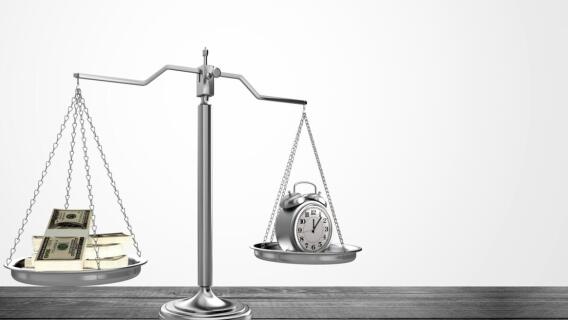Thanks to Covid-19, some of America’s largest public companies are strapped for cash. That means dividend cuts are coming. Here’s how to avoid the potential dividend slashers.
The stock market rally from the low in March has been impressive indeed. At the close last Monday, the S&P 500 had rallied 47% since March 23. The index was in positive territory for 2020 and was within 5% of the all-time high.
That seems odd. After all, there are some 40 million new unemployed. Forecasts range from a 30% to 50% contraction in GDP in the second quarter. Those numbers are worse than the Great Depression. But the market is forward looking.
Sure, it’s the worst economic quarter we’ve seen in our lifetimes. But the market anticipates. It typically looks ahead six to nine months and trades on the expected situation then. The market sees an economy making up for lost time and absolutely booming by then. And Mr. Market is almost always right.

Get My Free Report Now

Get My Free Report Now

Get My Free Report Now

Get My Free Report Now
I agree. I think the economy will be booming. It makes sense that a self-induced and sudden economic crash caused by government imposed lockdowns will lead to a much quicker than normal economic recovery when the restrictions are lifted. A greatly accelerated recession and recovery cycle in the economy is being mirrored by a rapid crash and recovery in the market.
The market may be looking beyond the second quarter, but the economic carnage for individual companies has yet to be realized. The disastrous second quarter will cause many dividend-paying companies to slash the dividend in order to free up much needed cash. A major cash flow disruption will necessarily result in major dividend cuts.
Beware of Dividend Cuts
It’s happening already. Several large cyclical companies have slashed or suspended the dividend, including Ford (F), General Motors (GM) and energy company Schlumberger (SLB). Stalwart dividend payers like Boeing (BA), Royal Dutch Shell (RDS.B) and Disney (DIS) have also joined the party. And it may be the tip of the iceberg.
Contracts trading on the Chicago Mercantile Exchange (CME) are predicting the S&P 500 index dividends will be cut to $47.55 in 2020 from $58.24 in 2019, and will be reduced further to a low of $42.05 in 2021. That’s a better than 27% reduction in dividends paid by S&P 500 companies.
Dividend cuts are a bummer in a couple of ways. First, the market typically hates dividend cuts and the stock price usually takes a big hit. Second, the cuts disrupt the income on which many dividend investors rely. It’s best to avoid companies that will slash or eliminate the dividend.
How do you do that? What do you look for? Here are a few things to watch:
4 Ways to Evaluate Dividend Safety
Earnings
Dividends are backed by earnings, just like a mortgage is backed by your income. Some company earnings are being severely hurt by the pandemic and others are not. Some companies are minimally affected and others are actually benefiting. More cyclical companies are in the crosshairs. A company that is taking a big financial hit is the first red flag.
It’s also important to look at the extent and duration of the financial hit. Are earnings 10% lower or 70% lower? How long will the pain last? Some companies may only have to endure a quarter or two of lower earnings. For others, it may take years to recover.
Payout ratio
How strapped to afford the dividend are those companies with financial disruptions? A payout ratio measures the percentage of net income of a company’s dividend. It varies by industry, but lower is generally better. If a company easily affords the dividend it is more likely to maintain it.
Financial strength
Does a company have enough cash to cover the dividend for a few quarters if earnings fall short? I can look at a person’s bank statements and quickly determine if they can pay their bills for six months or a year of unemployment or a pay cut. It’s the same thing with a business.
It’s also important to determine if a company has the ability to redirect resources to maintain the dividend. Several strong dividend-paying companies have suspended scheduled investments to free up extra cash for the dividend. That’s a big help.
Commitment
This is more important than people realize. Even if a company has the means to maintain the dividend, they also need the will. A good argument can be made to cut the dividend and free up cash if a company has less money coming in. It’s important to look at the track record. What has the company done with the dividend in past recessions? Does the company have an impressive dividend history that they will be motivated to defend?
There is great peril out there for dividend investors right now. There is also great opportunity to get some of the highest yields that have existed in a decade. But you have to know where to look. Maybe you don’t have the time or inclination to look into all this stuff. But I do. And I identify those dividends that are safe in my Cabot Dividend Investor and Cabot Income Advisor newsletters.
To learn which dividends look safe today, click here.

Learn More

Learn More

Learn More

Learn More

